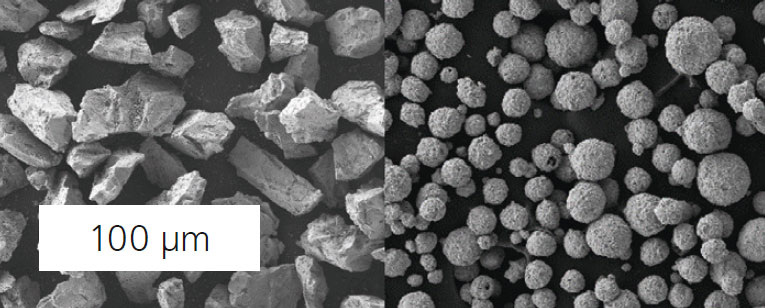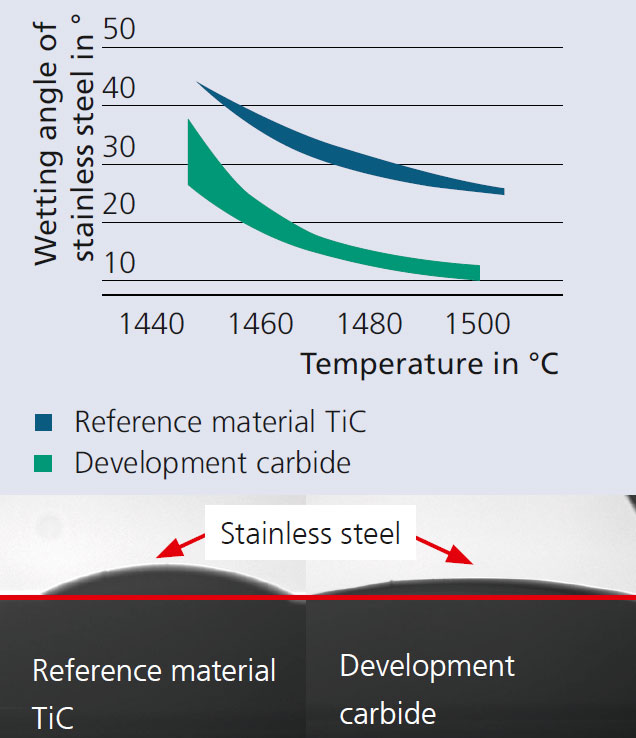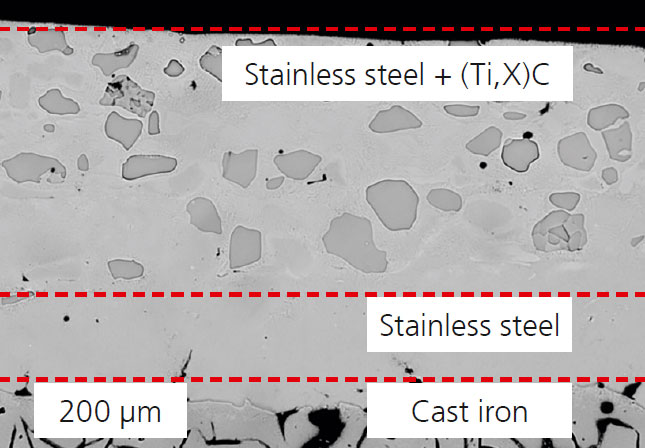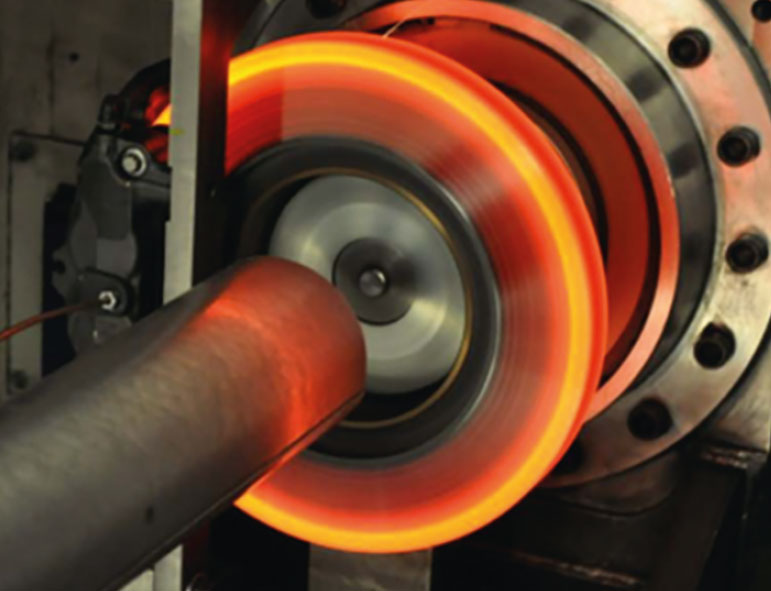
Novel hard materials for the development of wear-resistant brake discs
Current research




The new mobility concepts of the 21st century require technical adaptation of all components. Brakes are the central safety system of every vehicle and in their current conventional form, they no longer meet technical, ecological and legal requirements. For this reason, Fraunhofer IKTS works on innovative material solutions for laser and surface technology for a new generation of brake discs. The aim is to ensure the required braking performance, the active and passive safety of vehicles, passengers and road users, and a drastic reduction in particulate emissions for millions of these components.
As part of the SAB project BremsCLAD, IKTS develops carbide materials embedded in a metal matrix and optimized in terms of their function. The project partners C4 Laser Technology GmbH and Fraunhofer IWS apply these materials to the cast iron brake disc base body through high-performance laser cladding. In this process, the carbide and metal powders are mixed by a customized powder nozzle system and applied to the rotating brake disc via a laser beam.
The new carbide materials developed at IKTS are produced using industrial processes, such as sintering and crushing (s&c) and agglomeration and sintering (a&s). The latter are also suitable for the production of pre-compacted carbide metal powders. The development carbides (Ti,X)C show a comparable or superior hardness of up to 2530 HV0.1 compared with the reference material TiC with 2420 HV0.1. Likewise, increased density in the range of 6 g/cm³ (TiC: 4.9 g/cm³) allows for improved flowability and a smaller particle size, which in turn enables reducing the coating thickness.
For a low-defect coating of carbide material and metal matrix, the carbide material was further optimized with respect to the wetting behavior of the metal matrix. Wetting angle measurements show that, depending on the chemical composition, the wetting angle can be halved compared with TiC (Figure 2). This leads to a homogeneous and dense coating produced with less laser power and thus lower energy consumption. Alternatively, the production of binder-containing carbide powder (carbide metal powder) was investigated in order to achieve improved wetting with the metal matrix during laser processing.
With optimized developing carbides, it is possible to realize a material-efficient and cost-effective coating with lower coating thickness and reduced hard material content. At the same time, the faster heat transfer to the cast-base body reduces the thermal load of the coating in use. Currently, the brake discs coated with the development carbides are being tested with the project partner, C4 Laser Technology GmbH
The SAB project BremsCLAD (funding no. 100552819) is financially supported by the EU and the Free State of Saxony from funds of the European Regional Development Fund (EFRE).

Sponsored by

